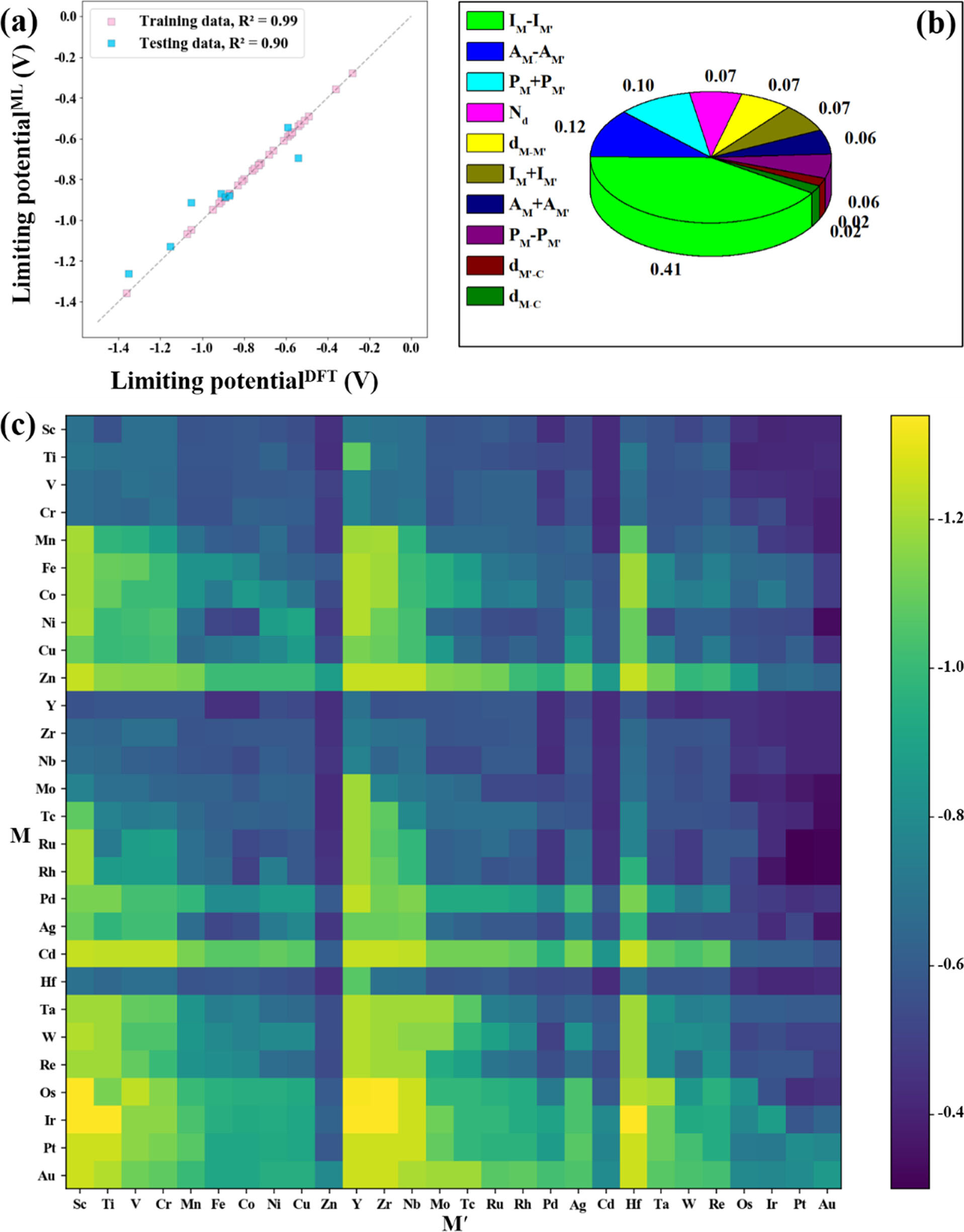| Jul 11, 2023 | |
New frontiers in CO2 reduction: A novel approach to double metal atom catalysts |
|
| (Nanowerk Spotlight) As we grapple with the escalating threat of climate change, the quest to decarbonize our atmosphere is more urgent than ever. A promising strategy to reduce atmospheric CO2 concentration lies in the use of electrocatalytic CO2 reduction reactions (CO2RR) powered by clean energy sources. | |
| One emergent and exciting area of research within this field centers on the use of single and double atom catalysts (SACs/DACs) supported by two-dimensional (2D) materials. These catalysts not only amplify electrocatalytic performance but also optimize the use of metal atoms, thereby presenting an environmentally friendly and efficient approach to mitigating CO2 emissions. | |
| At the forefront of this research, a recent study led by Prof. Zhongfang Chen from the University of Puerto Rico, Professor Fengyu Li from Inner Mongolia University, and Dr. Jingsong Huang from Oak Ridge National Lab, unveils an innovative approach to DACs for CO2RR applications. Departing from conventional configurations of DACs, which involve metal atoms loaded within the same plane of 2D substrates, the team has delved into a novel category of catalysts: DACs supported on defective graphene with inverse sandwich structural patterns (MM'⊥gra). The investigation fuses first-principles density functional theory (DFT) and machine learning (ML) techniques to unlock their potential. | |
| "The broadly studied DACs thus far are limited only to those with the double metal atoms loaded in the same plane of the 2D substrates," Chen explains to Nanowerk. "We designed a novel DAC configuration of inverse sandwich structure: metal dimers vertically and symmetrically embedded in defective graphene." | |
| The concept was inspired by the experimental synthesis of inverse sandwich structure La-B clusters, which sparked interest in the performance of graphene-supported double atoms with inverse sandwich structure as gas sensors. Upon discovery that certain metal dimers in the inverse sandwich structure have strong interaction with CO2 molecules, Chen and his team conjectured that these DACs might show promise for electrocatalyzing CO2 reduction due to the well-activated CO2 molecule. Thus, their exploration of the CO2RR performance of 784 possible DACs of 28 transition metal atoms commenced, using a blend of DFT and ML. | |
| The team's findings, published in ACS Catalysis ("Double-Atom Catalysts Featuring Inverse Sandwich Structure for CO2 Reduction Reaction: A Synergetic First-Principles and Machine Learning Investigation"), bring to light the vast promise of DACs with these novel inverse sandwich configurations for electrocatalyzing CO2RR. | |
 |
|
| ML training and prediction. (a) Comparison of UL obtained by DFT with ML predicted values. (b) Feature importance based on the GBR model. (c) ML-predicted heat map of UL values for the 784 MM′⊥gra. (Reprinted with permission by American Chemical Society) | |
| The study discloses key factors of inherent atomic properties that correlate to the electrocatalytic performance of these DACs, contributing valuable insight for future catalyst predictions. | |
| Regarding the practicality of this research, Prof. Chen emphasizes that scalable and highly efficient electrocatalytic CO2RR catalysis can indeed offer a viable strategy for reducing CO2 emissions. By screening numerous potential DACs, their work helps pinpoint the ones that hold promise for this purpose. | |
| In particular, the Rh2⊥gra DAC, based on DFT calculations, was found to outperform other candidates. Meanwhile, an ML approach was used to correlate key factors with the activity and stability of the DACs. The resulting ML models were then utilized to predict 154 potential electrocatalysts out of the possible 784 DACs featuring the same inverse sandwich configuration. | |
| These findings are significant in aiding the development of new DACs to help reduce atmospheric CO2 concentration. Chen sees great potential in their approach. "The combination of density functional theory calculations and machine learning methods were applied to screen promising graphene-based DACs featuring inverse sandwich structure for CO2RR," he explains. "This work helps develop new DACs to reduce atmospheric CO2 concentration." | |
| Looking ahead, Chen anticipates that this research may prompt the exploration of novel DACs not only on graphene but also on other suitable 2D materials. While the synthesis of DACs with inverse sandwich structures is challenging, he maintains that it is feasible. | |
| "Our study provides a novel design strategy of DACs for CO2RR and beyond," he says. "Though it is highly feasible to synthesize DACs with inverse sandwich structures, it is challenging to fabricate DACs with such novel configurations in experiments." | |
| In conclusion, the team's innovative approach to DACs heralds a new era in the realm of CO2 reduction. The marriage of DFT computations and ML techniques in their study brings a fresh perspective to catalyst design and presents an encouraging step towards the decarbonization of our atmosphere. | |
 By
Michael
Berger
– Michael is author of three books by the Royal Society of Chemistry:
Nano-Society: Pushing the Boundaries of Technology,
Nanotechnology: The Future is Tiny, and
Nanoengineering: The Skills and Tools Making Technology Invisible
Copyright ©
Nanowerk LLC
By
Michael
Berger
– Michael is author of three books by the Royal Society of Chemistry:
Nano-Society: Pushing the Boundaries of Technology,
Nanotechnology: The Future is Tiny, and
Nanoengineering: The Skills and Tools Making Technology Invisible
Copyright ©
Nanowerk LLC
|
|
|
Become a Spotlight guest author! Join our large and growing group of guest contributors. Have you just published a scientific paper or have other exciting developments to share with the nanotechnology community? Here is how to publish on nanowerk.com. |
|
